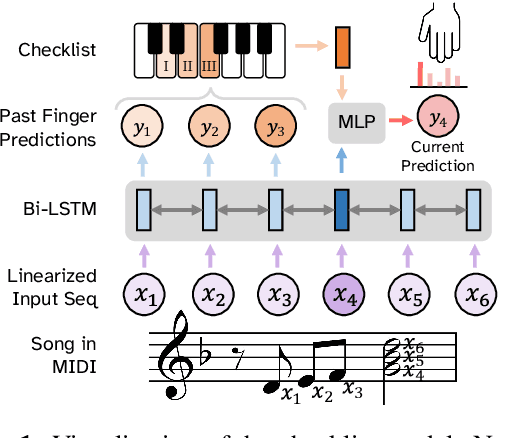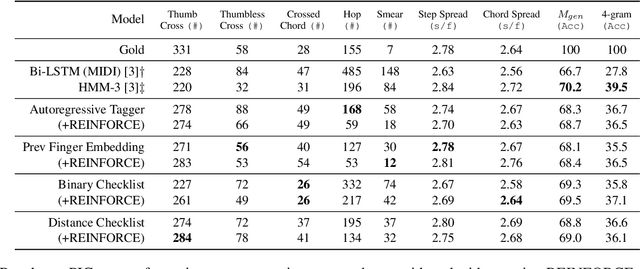Checklist Models for Improved Output Fluency in Piano Fingering Prediction
Paper and Code
Sep 12, 2022



In this work we present a new approach for the task of predicting fingerings for piano music. While prior neural approaches have often treated this as a sequence tagging problem with independent predictions, we put forward a checklist system, trained via reinforcement learning, that maintains a representation of recent predictions in addition to a hidden state, allowing it to learn soft constraints on output structure. We also demonstrate that by modifying input representations -- which in prior work using neural models have often taken the form of one-hot encodings over individual keys on the piano -- to encode relative position on the keyboard to the prior note instead, we can achieve much better performance. Additionally, we reassess the use of raw per-note labeling precision as an evaluation metric, noting that it does not adequately measure the fluency, i.e. human playability, of a model's output. To this end, we compare methods across several statistics which track the frequency of adjacent finger predictions that while independently reasonable would be physically challenging to perform in sequence, and implement a reinforcement learning strategy to minimize these as part of our training loss. Finally through human expert evaluation, we demonstrate significant gains in performability directly attributable to improvements with respect to these metrics.
 Add to Chrome
Add to Chrome Add to Firefox
Add to Firefox Add to Edge
Add to Edge